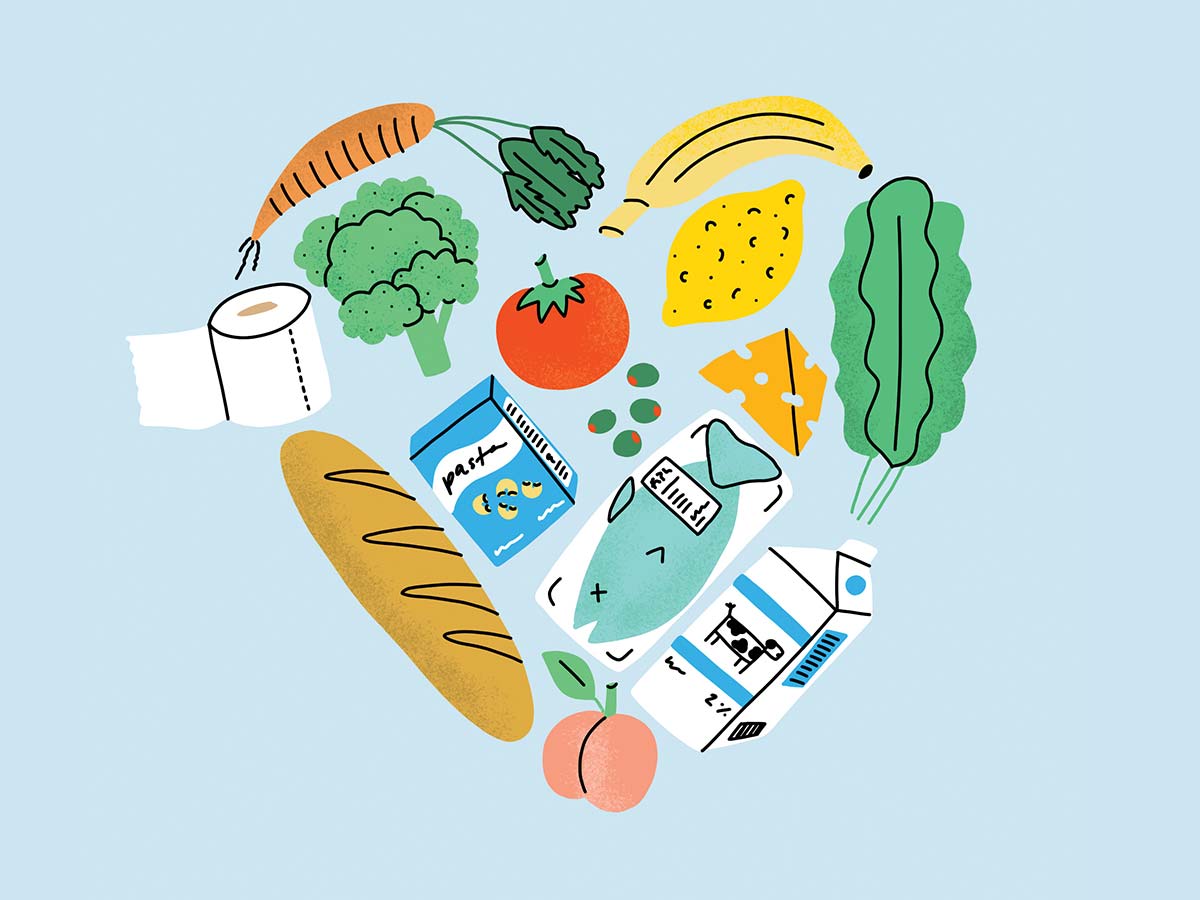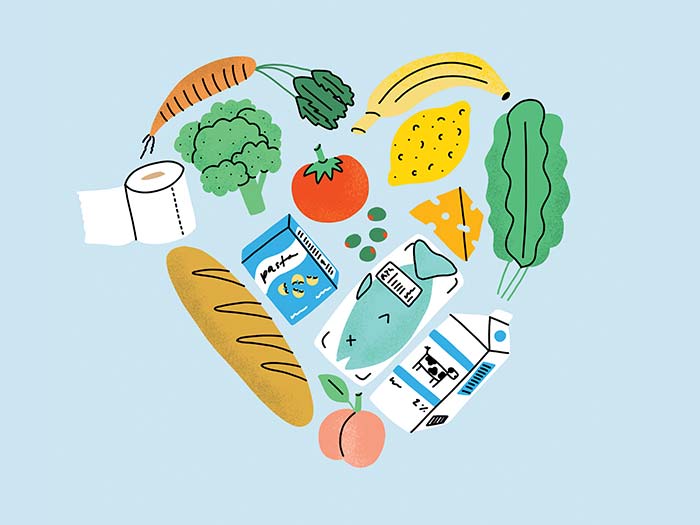
Have you heard of mutual aid?
 Mutual aid groups can help by sourcing and providing essentials like food, clothing and medicine (Illustration by Leeandra Cianci)
Mutual aid groups can help by sourcing and providing essentials like food, clothing and medicine (Illustration by Leeandra Cianci)
When the World Health Organization declared the COVID-19 outbreak a pandemic on March 11, Canadians concerned for those most vulnerable in their communities decided to take action.
Within 72 hours, at least 35 “caremongering” Facebook groups had sprouted to deliver groceries and other essentials to grateful seniors and at-risk families. More than 30,000 Canadians have since joined and contributed. Inspired by their success, copycat groups popped up in countries like South Africa, India and Switzerland. Across the world, university students, social workers, librarians, activists and many more have created similar ad hoc groups to help people most threatened by COVID-19, as well as the millions who lost their jobs because of the lockdowns imposed to slow the spread of the virus.
These volunteer-run support systems practise and preach the straightforward ethos of mutual aid: Those who can provide help care for those in need. As overstretched governments struggle to cover all the needs of their disadvantaged and unemployed citizens, mutual aid groups can help by sourcing and providing essentials like food, clothing and medicine. Other groups raise relief funds or even organize Skype chats with lonely people self-isolating in their homes. The groups vary in size from neighbourhood “pods” with a handful of members each, to networks with tens of thousands of participants spanning a city or region. They also typically coordinate and advertise their aid distribution through social media, with Facebook, WhatsApp, Instagram and tools like Slack and Google Docs proving popular. Helping out neighbours during a crisis has always happened, but the contemporary vision of mutual aid has its origins in an influential 1902 essay written by Russian philosopher and anarchist Peter Kropotkin, who called for “mutual support, not mutual struggle.”
Mutual aid’s anarchist background underscores what makes it different from charities and other forms of institutional aid: Mutual aid groups have historically been decentralized and non-hierarchical, with services shaped by aid recipients rather than donors. In this era of widening income disparity, many groups who self-identify as mutual aid organizations also view structural inequities as the root causes behind why countless vulnerable people are dependent on their support.
That’s why several mutual aid groups are now evolving into non-profits. These groups, like the “Banker Ladies” of Toronto—African-Canadian women who create community-driven financial cooperatives—aim to emulate the success of established self-organized lending circles that support the disadvantaged. By advocating for social and economic reforms that support the marginalized and vulnerable, mutual aid organizers hope that when the next pandemic strikes, their help won’t be as desperately needed by so many.
MORE COVID-19 UPDATES
Learn why the next recession will be like no other and what small businesses can do to survive the impact of the global pandemic. Read about what employers and employees need to do to keep everyone at work safe and how to stay clear of scams related to COVID-19. For those working from home, these tips will ensure you stay productive.
Also, stay up-to-date with CPA Canada’s compilation of external resources and online news articles related to the impact of the coronavirus.